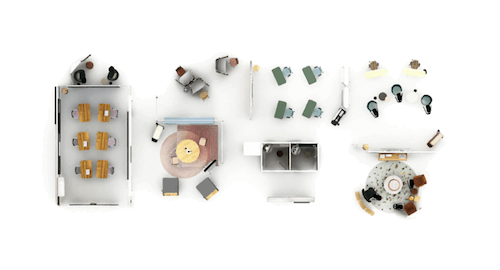OFFICE LEASING HONG KONG
OCT 2022|LAST UPDATED
FIND THE IDEAL OFFICE FOR RENT
Office leasing in Hong Kong?
The process of setting up or leasing commercial office space can be complex, time-consuming & highly demanding. Read the ultimate guide to office leasing terms & lease mechanisms.
RECEIVE OFFICE LISTING IN 2 MINS!
OFFICE LEASING SOLUTIONS
5 - 10 PERSON OFFICES
AREA (G): 600 - 1,000 SQ FT
RENT (MTH): > HK$38,000
FITOUT SAVINGS: HK$1,500,000
LEASE TERM: 2 - 3 YEARS
10 - 20 PERSON OFFICES
AREA (G): 2,000 - 3,000 SQ FT
RENT (MTH): > HK$70,000
FITOUT SAVINGS: HK$2,500,000
LEASE TERM: 2 - 3 YEARS
20 - 30 PERSON OFFICES
AREA (G): 3,000 - 5,000 SQ FT
RENT (MTH): > HK$90,000
FITOUT SAVINGS: HK$3,500,000
LEASE TERM: 2 - 3 YEARS
30 - 60 PERSON OFFICES
AREA (G): 5,000 - 8,000 SQ FT
RENT (MTH): > HK$150,000
FITOUT SAVINGS: HK$5,500,000
LEASE TERM: 2 - 3 YEARS
CUSTOM OFFICES? GO SAVVI OFFICES
UP TO 20,000 SQ FT
LOWEST ‘CROWDSOURCED’ RENTALS
PRE-BUILT OFFICES
LEASE TERM: 3 - 5 YEARS
OFFICE LEASING GUIDELINES
OFFICE TERMS
Lease Term
Lease terms in Hong Kong are typically for three years, although variations are negotiable. Larger occupiers may be able to secure multiple terms of six to nine years subject to rent review at the end of every third year at open market rent (OMR). If the parties cannot agree on OMR, an independent expert valuer or arbitrator determines the rent.
Renewals
Options negotiable, typically a further 2 or 3 year term.
Rent Reviews
It is customary for longer leases to incorporate a ‘Rent Review’ at the expiry of the 3rd year. Rent is normally reviewed to the prevailing open market level, the definition of which will vary from lease to lease.
Escalation
No escalation within 3-year leases. OMR after 3 years with 6-year leases.
OCCUPANCY COSTS
Rent
Rent is payable monthly in advance. Rents are quoted in Hong Kong dollars (HK$) per square foot, per month and are calculated with reference to the leased area as defined by the landlord (Net/Gross/Lettable). The rent is exclusive of management fees and is typically fixed for the term of the lease or until the agreed rent review date.
Learn more about exclusive SAVVI rentals here.
Rent Free
An incentive offered by the landlord to the tenant as an allowance for the fitting-out of the premises. The length of the rent free period depends on the size of the premises and the prevailing market conditions. During tight market conditions, free rent offered may range from one to three months or more. During weak market conditions, some landlords offer four free months or more, depending on the tenant, the length of the lease term, the size of the space leased and the rental rate.
Management Fee
Payable monthly in advance and based on the leased area. Management charges generally include air conditioning, building security, lift maintenance and common area cleaning (Subject to revision by management company). The fee is quoted on per square foot per month and is non-negotiable and may be revised from time to time. A typical service charge for a Grade A building is HKD 6–15 per square foot per month.
Security Deposit and Guarantees
Tenants are required to pay a security deposit equivalent equivalent to two or three months' rent, management fees and government rates and is payable by the tenant to the landlord upon signing the formal Tenancy Agreement. For new set up companies, this deposit may extend to six months or more. The security deposit is held by the landlord for the period of the tenancy and, provided that the tenant has upheld all conditions of the tenancy (such as paying the rent and bills, and maintaining the property in good condition), is refundable after the tenancy period.
Terms on which the deposit is refunded should be stated in the formal Tenancy Agreement; most tenancy agreements stipulate that the security deposit will be returned within fourteen days to one month after the tenant moves out to give the landlord time to check the condition of the property and see that all bills have been settled. Unlike many other countries, in Hong Kong the security deposit is repaid without interest.
Taxes
Government rates and rent are payable quarterly in advance and are calculated at 5% and 3% of the rateable value of the property respectively. Government rent is usually borne by the landlord, but some smaller landlords may look to pass this cost on to the tenant.
Stamp Duty (Ad Valorum Tax)
The landlord and tenant typically share equally a one-time cost of stamp duty at the prevailing rate, and other incidentals involved in preparation and execution of lease documents. With a surrender or sublease, the outgoing tenant pays the costs.
At the commencement of 2014 the following Stamp Duty rates apply and are payable upon execution of the lease:
- 0.25% of the average annual rent / lease term 1 year or less
- 0.5% of the average annual rent / lease term 1-3 years
- 1% of the average annual rent / lease term of 3+ years
Utilities
Electricity and telephone charges are separately metered and paid directly by the tenant to the utility company. The electricity charge is usually based on a meter, and is typically HKD 1.00–1.20 per square foot per month for an office tenant.
Tenants usually pay for water charges based on a meter. In some cases, water rates are typically charged to the landlord and passed onto the tenant through a fixed license fee or in the management fee.
Insurance
The tenant will need to take out sufficient insurance to protect themselves against third party liabilities (including fire and flooding).
Car Parking
The average rate ranges from HKD 3,000–6,800 per month in addition to office rent. Terms and conditions are covered in a separate license agreement, usually not coterminous with the tenancy agreement, so that the licensee can rent a parking space for a shorter period than an office lease. Parking spaces can be fixed (assigned) or floating (non-assigned), covered or outdoor, 24 hours, seven days a week, or 8am to 6pm, Monday to Friday. Generally, up to two spaces are allocated for a 10,000+ square-foot office.
LEASE MECHANISMS
Option to Renew
Options to renew may be considered subject to market conditions and landlords; however, larger tenants can often secure an option to renew at expiry of the lease on original lease terms. Conditions such as serving of notice and method of assessment of the rental will be stated in the Tenancy Agreement. Typically, rent is determined by OMR at lease renewal.
Option to Expand & Right of First Refusal
Unusual but negotiable. A right of first refusal is more common. When a new space becomes available, the landlord will give written notice to the tenant with a right of first refusal over that space and the tenant typically has 10 days to one month to accept that right.
Right to Sublet
Sub-letting rights are prohibited under most agreements and where they are permissible, are subject to approval by the landlord. Similarly, assignment of the lease and early termination are usually non-negotiable. Subject to approval by Landlord, replacing a tenant can be done in one of two ways: Sublease or Assignment. In either case, the outgoing tenant will need permission and co-operation of the landlord and should expect to pay the landlord's share of the agency fee, legal costs and stamp duty payable.
1. Sublease:
The new or replacement tenant takes over the property until the expiry of the existing lease. Large tenants normally find it easier to secure sublet rights than small tenants do. If a landlord agrees to grant a sublet right, the maximum size to be sublet is specified in the tenancy agreement. The norm is 20–30% of the total floor area.
2. Assignment:
The new or replacement tenant has a lease granted by the landlord.
Termination or Break
While there are no inherent termination or break rights, the tenant may be able to terminate the lease early by one of two ways:
Through negotiation and mutual agreement to surrender by compensation.
Through introduction of replacement tenant to take up a new lease with terms and condition agreeable to the landlord.
Learn more about exclusive termination and lease surrender services here.
Sale & Redevelopment Clause
Many leases include sale and redevelopment clauses which give the landlord a right to terminate the lease by giving a specified number of months’ notice to terminate, if the landlord wants to sell or redevelop the building. Typically, the lessor has to give at least six months’ notice in writing to the lessee. The lease will terminate upon the expiry of the notice.
Changes of ownership or plans to redevelop the site on which the subject premises is located can trigger the landlord’s rights to take back possession of the leased premises. It is advised occupiers seek appropriate legal advice in this regard.
Reinstatement Provisions
A reinstatement provision is common place in most Hong Kong leases. The tenant is required to hand the premises back to the landlord at the expiration of the term, in a bare shell or standard landlord handover condition.
Learn more about mitigating reinstatement cost here.
Signage and Naming of Building
Signage and naming rights depend on the area leased and are subject to availability.
Fit-out Subsidies
Capital contributions for fit-outs are generally not open for negotiation.
Learn more about mitigating fit-out cost here.
Landlords
Portfolio Landlords
“Portfolio Landlords” represent a large proportion of the overall market, often owning clusters of buildings including a mixture of retail and commercial. Commonly, Portfolio Landlords have been involved in the development of the property or scheme and take responsibility for building management in-house.
Single Ownership
Typically held by private investors, institutions or larger organisations. The owners will frequently employ the services of a third party specialist to take care of the day-to-day running of the property.
Strata-Title
A small number of the office buildings in Hong Kong are held by way of a “strata-title” where various landlords own office suites or floors in a building. The rights and responsibilities of property owners and overall property stewardship are outlined within the Deed of Mutual Covenant.
Similar to an apartment block, the communal areas of the property (including the exterior of the building) are usually managed by an external management company. The process of acquiring space in a strata-title property is no different to any other commercial space. However, occupiers should be aware that any future expansion plans may be challenging. Sale and redevelopment clauses can also cause some concern in these buildings.
Associated Cost
Fit-out Costs
Possession of the premises is normally provided in “bare shell” condition. Costs associated with fitting out the space will be borne by the tenant.
Tenants normally pay for all tenant improvements, except that the landlord normally delivers the space with suspended ceilings, ceiling lighting and restrooms (landlord’s standard handover condition).
A tenant is generally free to use its own architect and engineers, and must use the landlord’s contractor for air-con / fire sprinkler and plumbing. The tenant must fit-out the premises according to plans and specifications as approved in writing by the landlord.
Fit-out costs are typically quoted and assessed on the net square footage of the space and for Class A or Prime buildings normally range from HKD 600–1200 per square foot, including construction, furniture, wiring, design fees, etc.
For tenant-paid improvements at move-in and during occupancy, the landlord charges handling fees, typically 10% of the price quoted by nominated contractors for carrying out electrical, plumbing, air conditioning, and fire prevention maintenance work. Ranges shown below include design and engineering fees but exclude furniture and IT cabling:
- Average: HKD 400–600 per square foot net (basic specifications to suit-trading companies).
- Enhanced: HKD 600 – 800 per square foot net.
- Professional Services: HKD 800 – 1200 per square foot net.
- Very High-End: Some investment banks spend over HKD 1500 per square foot net on renovation.
Learn more about mitigating fit-out cost here.
Reinstatement
The lease agreement generally requires tenants to restore the property to its original handover condition, before the expiration of the tenancy at their own cost.
Reinstatement costs for Class A or Prime buildings normally range from HKD 150–300 per square foot net.
Learn more about mitigating reinstatement cost here.
Vetting Fees
The landlord will charge a fee for the vetting and approval of layout plans, together with a management charge for works in progress.
Legal Fees
Each party will bear their own legal costs in the negotiation and execution of the lease and any further documentation required. Typically, the landlord’s solicitors prepare the lease agreement using fairly standard terms and conditions.
A standard tenancy agreement is common, and landlords are generally reluctant to accept major changes. Major landlords usually have their own standard tenancy agreements, which include some landlord-specific terms.
Agency Fees
If the tenant enters into a commitment with a new landlord, that landlord will pay the agent a fee; which is normally one month of the new rent.
New Lease:
- The landlord usually pays 1 month rent to the agent who introduces a tenant to the landlord (subject to the market condition).
Lease Renewal:
- The tenant pays the fee to the broker representing the tenant. The normal standard rate is a portion of one month or a percentage of savings over the new lease term based on the landlord’s initial quote.
Sublease:
- Typically the sublandlord pays the fee to its broker. The normal standard rate, which is negotiable, is 1.5–2 months’ rent. The sublandlord normally offers 1–1½ months’ commission to find a subtenant, which may be split between the agent acting for the sublandlord and the agent acting for the subtenant. If the sublandlord’s agent finds a new tenant on his own, the broker keeps the entire fee. If the sublandlord’s agent acts in conjunction with an outside agent to find a new subtenant, then the two agents typically split the fee.
Sale and Purchase:
- Usually the buyer pays 1% to its broker, and the seller pays 1% to its broker. The fee is negotiable, and influenced by market conditions and the total value of the transaction.
Space Planning
Office Areas Defined
Tenants should take care in confirming the true usable area of potential office space to ensure they can compare the associated costs on a like-for-like basis.
Gross Area:
The total area measured to the outside of external walls, including elevator lobbies and wells, restrooms, staircases and all mechanical areas. Similar to lettable area, all elements of the common areas are apportioned on a pro-rata basis if the floor is subdivided.
Lettable Area:
The net area, plus structural columns and a percentage of common areas such as elevator lobbies and restrooms. Common areas are apportioned on a pro-rata basis if the floor is subdivided.
Net Area:
The actual usable “carpet” areas of the premises and in some cases also include elevator lobbies and column space within the premises.
Efficiency:
A percentage that represents a ratio of useable area to gross area (or lettable or net area), as illustrated in examples below. The term “carpetable area” is not familiar in Hong Kong.
A typical 10,000-sq. ft. gross floor plate will have approximately 8,500 sq. ft. lettable and approximately 7,500 sq. ft. net usable square feet. A landlord can quote on a gross, lettable, or net area basis.
Efficiency
Gross Basis:
If a landlord quotes rent on a gross basis, the tenant pays on a gross basis, but typically the tenant can only use about 75% of the space it pays rent on. The efficiency is 75% in this example. Depending on the size of the floor plate, efficiencies range from 60–80% when the landlord quotes on a gross basis.
Lettable Basis:
If the landlord quotes rent on a lettable basis, the tenant pays on that basis, but typically the tenant can only use 85% of the space it pays rent on. The efficiency is 85% in this example. Efficiency of lettable area depends on the size of the floor plate and usually range from 80–93% when the landlord quotes on a lettable basis.
Net Basis:
When landlords quote and tenants pay on a net basis, efficiency is usually 100%, but it can range from 95–100%. This means a tenant can actually use 95–100% of the space it pays for; up to 5% can be lost to a lift lobby area.
Space Measurement
Tenants generally should engage a designer to measure the floor area of the leased premises. No single standard of space measurement applies in Hong Kong. Floor areas are quoted based on gross area, lettable area, or net area and rents, service charges and various charges are based on these measurements. Tenants should understand the difference between them in order to compare the true cost on actual useable space of the premises.
Feng Shui
According to traditional Chinese custom, the advice of a feng shui expert is sought when moving to a new house or office or retail shop. The expert advises on the suitability of the new location for the individual or business. Feng shui experts also advise tenants as to how to improve the living or working environment.



































